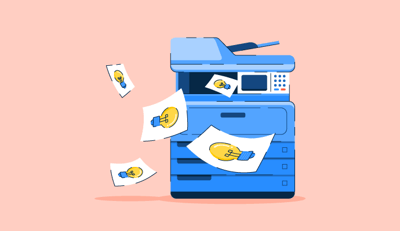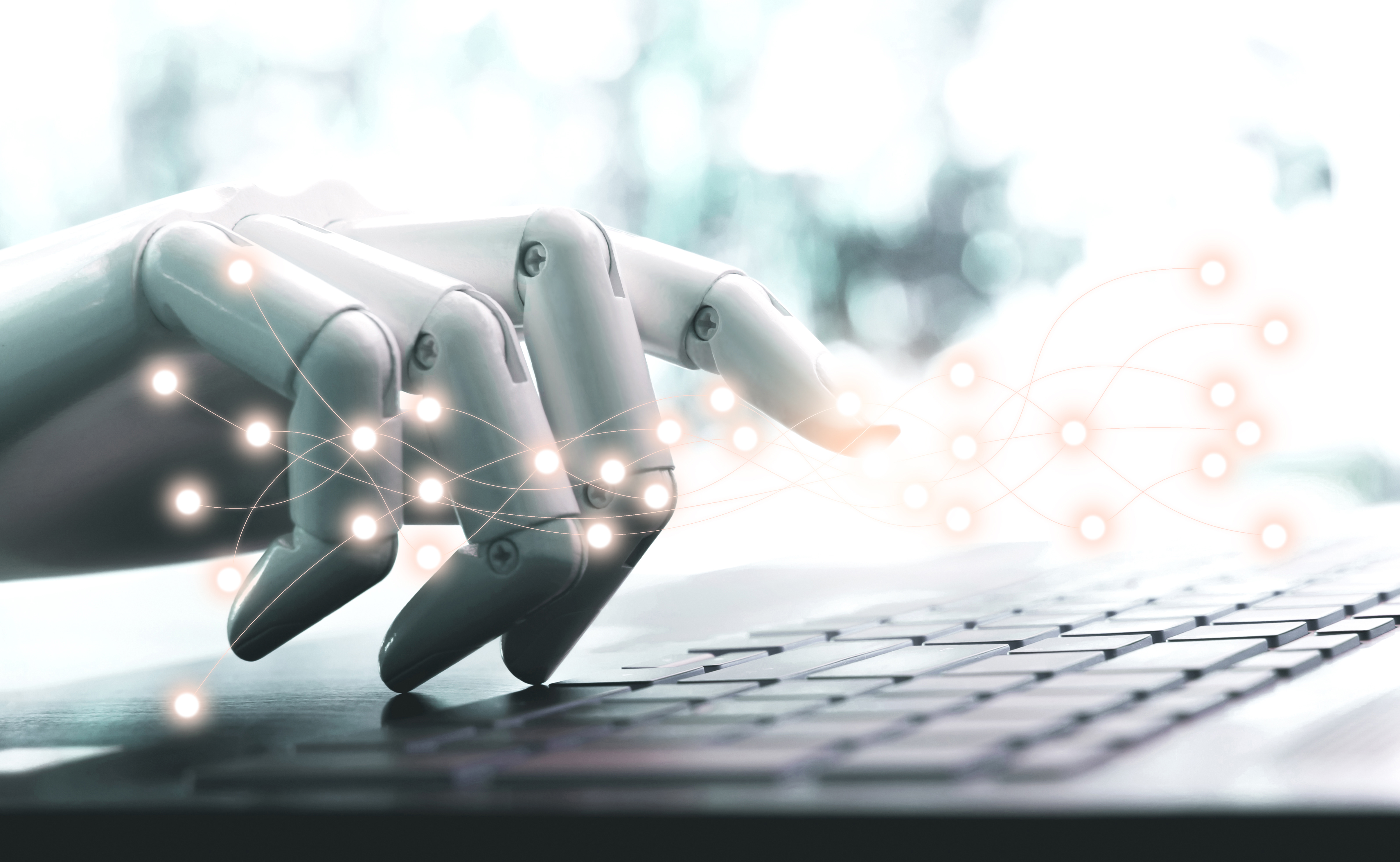
Plagiarism is an unethical use of content, yet people still do it.
All information sources require a citation, whether in an academic or professional atmosphere. Missing citations lead to plagiarism, or the uncredited use of another person's content (words or otherwise).
While some people may be skilled at identifying plagiarized text with the naked eye, plagiarism checker software and AI-powered platforms can provide multiple features for making content readable, impactful, and grammatically correct. Software as a service (SaaS) is used as a platform for users to check their documents for plagiarism.
Similar to many other booming fields, artificial intelligence has been implemented to tackle the problem of plagiarism. AI takes on a vital role in this regard because stolen content often gets modified to a great degree in order to evade even the strongest copy content scanning software.
Manually detecting and recognizing instances of plagiarism is no longer feasible. With the wealth of content on the web, the time it takes to detect instances of plagiarism is inefficient and not as accurate as AI-powered solutions are. Plus, in the era of the operating system, data centers that automatically scan content for plagiarism detection is the new norm.
In fact, software has specifically been developed for automatic detection of plagiarized text in any document, from a Master's thesis to a company eBook. Still, due to the easy access of information online, instances of plagiarized text have increased exponentially in the internet era.
On top of that, there are savvy text-modification tools some people use to evade plagiarism detection. Thus, AI-powered plagiarism detection is the best method for accuracy. Plagiarism has developed into a menace, and committing plagiarism has become very easy. To eliminate plagiarized content from online archives and to promote a plagiarism-free environment, highly intelligent software systems have been developed to halt the growth of plagiarism.
Introducing artificial intelligence to plagiarism detection was done with the sole purpose of uncovering the most highly disguised, modified forms of paraphrased text on paraphrasing tools. Such additions to AI include neural networks and machine learning, as well as natural language processing, to assist AI systems with plagiarism detection.
The neural networks of AI are a replica of the human nervous system. The reasoning ability of the human mind is utilized in the field of machine learning for developing a near infallible plagiarism detection system.
AI for plagiarism detection is continuously evolving; it uses deep learning to produce accurate results. The human mind can reason logically, and our brain functions to help us to make difficult decisions. In the field of open source machine learning, decision-making abilities are utilized for programming purposes.
The application of this field on human lives is changing the known paradigm rapidly. Well-built software services are frequently used by students, teachers, and writers for checking grammatical and spelling errors in a text.
These services also provide users with the option to enrich the text with better synonyms, remove unwanted wordiness, and make the text more impactful for potential readers. These aiding services are provided by intelligent software or artificial intelligence.
Hence, AI has already been in writing applications for quite some time. However, the issue of increasing plagiarism has urged software developers to utilize AI programming for plagiarism scanning.
The application of AI in scanning documents for plagiarized matter is exceptionally significant in the present scenario where online plagiarism has become easy.
The presence of AI software helps in ensuring accurate detection of plagiarism in any published or uploaded document. Further research is underway for heightening the sophistication aspect of this kind of software.
AI software is moving toward the creation of an impeccable system that can make the task of plagiarism detection hassle-free. In many cases, plagiarism scanning through usual software leads to the generation of results that involves many false positives.
It implies that the highlighted results that get enlisted under instances of plagiarism might include results that do not fall within the ambit of plagiarism. On the other hand, students copying assignments from one another is a problem that might not always get detected through conventional plagiarism scanners. An effective scanning system is required to root out the inclination of taking shortcuts by copying ideas from fellow students.
AI-powered scanning platforms help in determining similarities between assignments submitted by students. Hence, the best form of plagiarism detection is possible by the application of AI.
The case of stolen content has acquired newer variations in the present world due to the technological advancements.The presence of an exact copy of the content is quite possible, as many scrapers don’t have the time or patience to create unique content. Thus, they often engage in such unethical practices. With time, the act of paraphrasing has acquired new improvising techniques that are not readily detected by scanners. Evasion of plagiarism has become easy due to the presence of newer methods of spinning content.
Inventive measures have been discovered by applying AI technology for building an online plagiarism checker to counteract the improvisations in plagiarism techniques.
Plagiarism detection has been a cause of paramount concern since the information boom on the internet. Cases of plagiarism existed before the advent of the online platform, but the number of cases was not very huge.
Plagiarism in the pre-internet age existed and was prominent, so blaming the internet for the increase in plagiarism cases is not entirely fair. The proclivity to plagiarize is the prime factor, and the existence of the internet did not encourage people to engage in unethical writing practices; rather, their inclination to steal content made plagiarism a factor.
The crux of the problem is the person’s intent. But that doesn’t imply that people always want to steal content from others. There are many situations where plagiarism occurs due to simple errors or unintentional inaccuracies.
If we think of the academic world, it's likely you've encountered the MLA style guide as a citation format. In any literature class, that would be the go-to style guide of choice. But if you're in another class, say one that uses the APA style guide, the process of quoting authors is different, and gives rise to some confusion regarding the citation formats, which can accidentally lead to plagiarism.
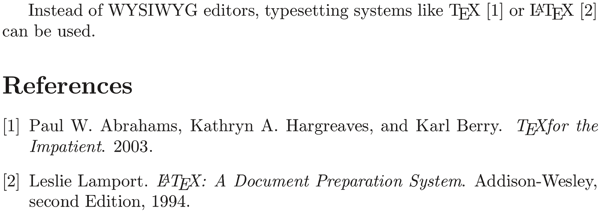
The algorithm of plagiarism scanners is tuned to detect similar copies of the text on the internet, including paraphrases. But tools for spinning content are also present online, and a plethora of informative sources are also available. Hence, the algorithm of software detectors needs to be modified to find all possible forms of plagiarism.
Artificial intelligence is built higher software technology and advanced algorithms for finding copied matter in any uploaded file.
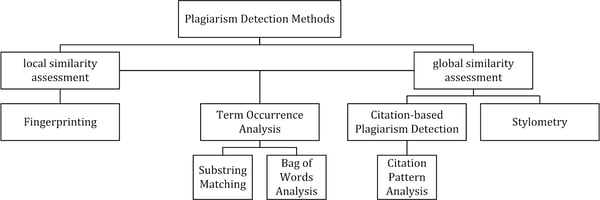
Infrastructure as a service, software as a service, and platform as a service are part of cloud computing services. Cloud service also provides hybrid clouds within public cloud services. Hence, machine learning and implementation have acquired significant proportions. The ongoing sophistication of the programming field resulted in AI-powered plagiarism checkers.
The difference between regular plagiarism scanners and AI tools lies in the higher capability of AI software in finding plagiarism. The need for bringing sophistication in the field of automated plagiarism tools stems from the rising and modified content-stealing techniques. Thus, the advanced form of AI software is employed for checking uploaded content to assess the degree and quantity of plagiarism in the document.
Checking written work for duplicate content is a tedious and exhausting task to accomplish, especially when the problem of content stealing is quite prominent on the internet, academically and professionally.
Content scrapers also steal content from websites and blogs that affect the leading site’s ranking. It is sensible to use an AI-backed detection tool to deal with the issues of copied substance. The prime utility of AI tools is the in-depth analysis it undertakes for detecting plagiarized content.
It is vital to ensure that the nuisance created by the boom in plagiarism is corrected and curbed effectively. The problem has become quite enormous as more people take the quick route of taking down information and publishing it under their name, even when it doesn't belong to them.
At times, people are misguided into doing plagiarism. There is a misconception that ideas taken from an online source that is not well-known can be left unaccredited. However, it is essential to understand that every bit of information that is not self-created has to be credited appropriately. Apart from common knowledge, every other piece of information has a source that has to be given in the credit list.
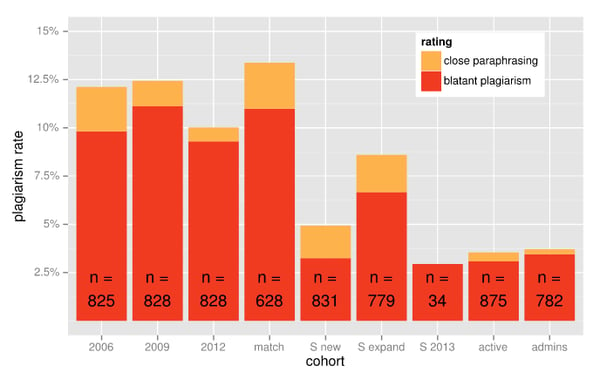
Unintentional and deliberate plagiarism occurs at an unprecedented pace. Informing people about plagiarism and its ill-effects is not enough to deter people from taking the shortcut of plagiarizing work form others. Because of this, steps need to be taken for punishing individuals found guilty of intentional plagiarism, which is why AI-powered plagiarism detection software solutions exist and should be employed.
The fight against plagiarism can be intense only when there is a sound and quick detection system. Incorporating artificial intelligence software for plagiarism checking helps in not only detecting copied/paraphrased text, but the mere implementation of such software deters people from directly stealing content from others.
Anmol is a Marketing Manager with Copyleaks. He is responsible for strategizing, executing, and overlooking all marketing activities. He enjoys managing content surrounding plagiarism needs for businesses.
Plagiarism isn’t an academic word that disappears once you graduate. Neither is it as simple...
 by Rebecca Reynoso
by Rebecca Reynoso
Plagiarism—using someone else's work or ideas and presenting them as your own—can have serious...
 by Sagar Joshi
by Sagar Joshi
As writers, we all want our work to stand out as genuinely our own. But with the internet...
 by Harshita Tewari
by Harshita Tewari
Plagiarism isn’t an academic word that disappears once you graduate. Neither is it as simple...
 by Rebecca Reynoso
by Rebecca Reynoso
Plagiarism—using someone else's work or ideas and presenting them as your own—can have serious...
 by Sagar Joshi
by Sagar Joshi

